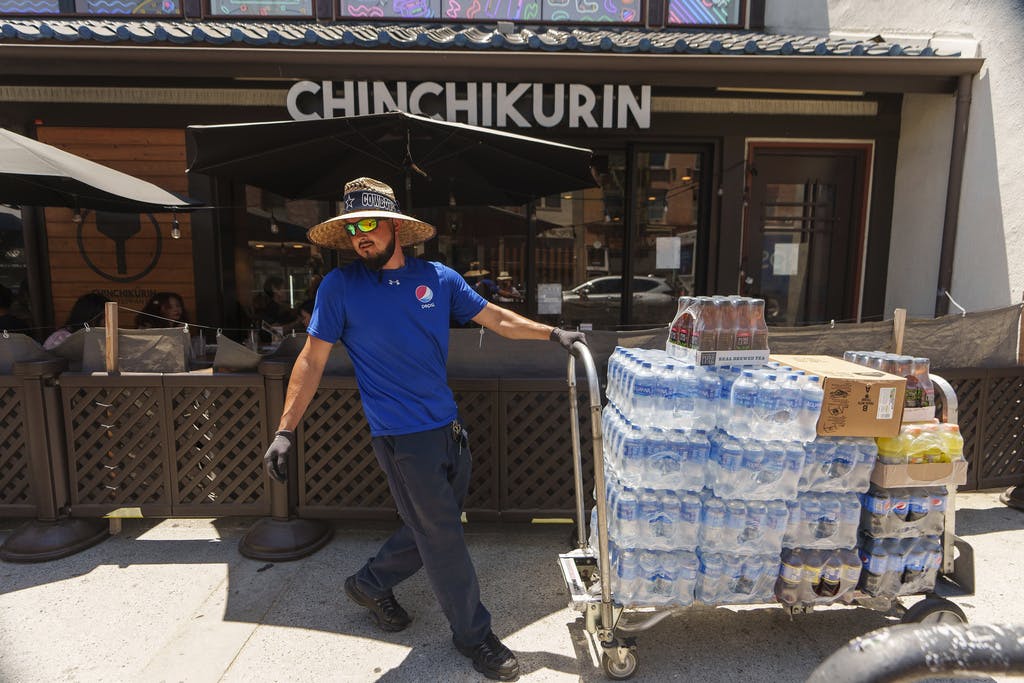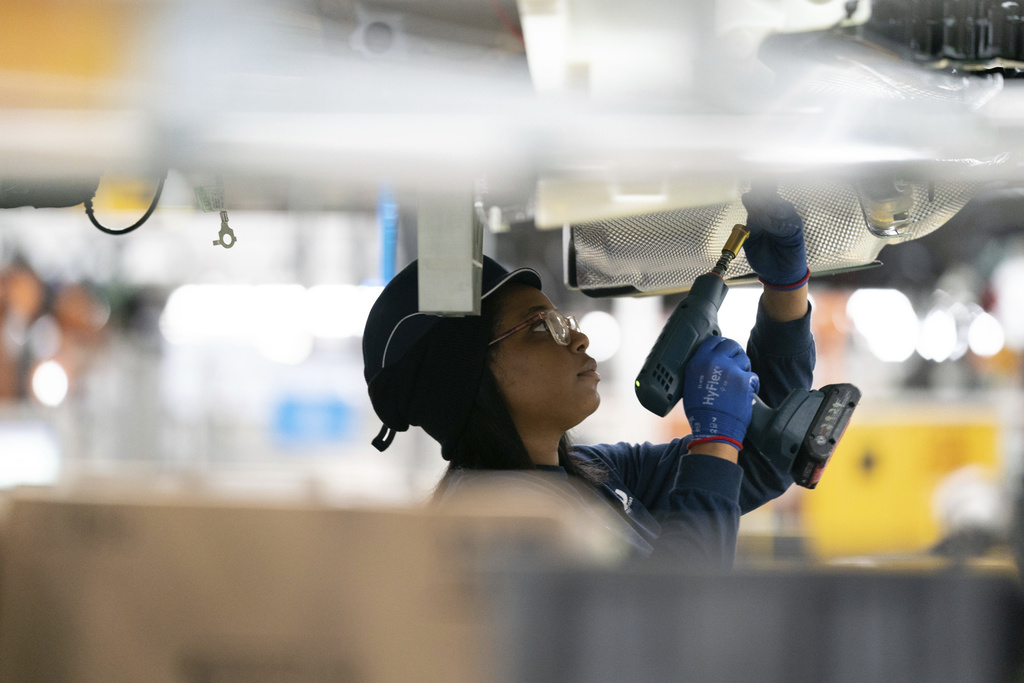American Employers Add 187,000 Jobs in July as Unemployment Dips to 3.5 Percent
The Fed’s inflation fighters will welcome news that more Americans entered the job market last month, easing pressure on employers to raise wages to attract and keep staff.

WASHINGTON — The job market has cooled over the summer, yet is strong enough to defy predictions that higher interest rates would tip America into a recession.
American employers added 187,000 jobs last month, fewer than expected. Yet the unemployment rate dipped to 3.5 percent in a sign of the job market’s resilience.
Hiring was up from 185,000 in June, a figure that the Labor Department revised down from an originally reported 209,000. Economists had expected to see 200,000 new jobs in July.
Still, last month’s hiring was solid, considering that the Federal Reserve has raised its benchmark interest 11 times since March 2022. And the Fed’s inflation fighters will welcome news that more Americans entered the job market last month, easing pressure on employers to raise wages to attract and keep staff.
“This is a good strong report,” said the chief economist at the jobs website ZipRecruiter, Julia Pollak. “The worst fears that people had of a painful downturn, a loss of jobs, longer unemployment durations, all those things — those are not coming to pass.”
Unemployment fell to a notch above a half century low as 152,000 Americans entered the job force. The number of unemployed fell by 116,000.
Despite the influx of employees, average hourly wages rose 0.4 percent from June and 4.4 percent from a year earlier — numbers that were hotter than expected and are likely to worry the Fed.
The Labor Department revised payroll figures down for both May and June, reducing the number of jobs created in those months by 49,000. With the revisions, June and July were “the two weakest monthly gains in two-and-a-half years,” the chief North America economist at Capital Economics, Paul Ashworth, noted.
In July, healthcare companies added 63,000 jobs. Yet temporary help jobs — often seen as a sign of where the job market is headed — fell by 22,000. And factories cut 2,000 jobs.

The owner of the SVS Group staffing firm at Oakland, California, Eugene Lupario, is seeing signs of a labor market slowdown — though certain businesses, such as restaurants and bars, are still hiring aggressively. “Interest rates have had an impact,” he said.
Banks and home lenders have been hit hard by higher borrowing costs and aren’t looking for much help. “They’re not getting new loans. They’re not getting Refis,” Mr. Lupario said. “Because rates are where they are, nobody’s going out there and buying first or second homes right now.”
And he said that some of the pandemic hiring frenzy has receded. “During Covid, a nurse, an RN, could ask for and get $100 an hour,” Mr. Lupario said. Yet hospitals are “not paying $100 an hour anymore. They’re paying pre-Covid rates at $75 to $85 an hour. Those same nurses that were making 100 bucks an hour are sitting on the sidelines maybe waiting for somebody to offer them $100 an hour, not realizing that they’re probably not going to get it.”
The American economy and job market have repeatedly confounded predictions of an impending recession. Increasingly, economists are expressing confidence that inflation fighters at the Federal Reserve can pull off a rare “soft landing” — raising interest rates just enough to rein in rising prices without tipping the world’s largest economy into recession.
Consumers are feeling sunnier too. The Conference Board, a business research group, said that its consumer confidence index last month hit the highest level in two years.
There’s other evidence the job market, while still healthy, is losing momentum. The Labor Department reported Tuesday that job openings fell below 9.6 million in June, the lowest in more than two years.
Yet, again, the numbers remain unusually robust. Monthly job openings never topped 8 million before 2021. The number of people quitting their jobs — a sign of confidence they can find something better elsewhere — also fell in June but remains above pre-pandemic levels.
The Fed wants to see hiring cool off. Strong demand for labor pushes up wages and can force companies to raise prices to make up for the higher costs.
The American labor market “is now cooling in a gradual and orderly fashion in line with the policy goals at the Federal Reserve, which points to a growing probability of a soft landing for the economy,” the chief economist for the tax and accounting firm RSM, Joe Brusuelas, said. “Demand for labor remains solid but is clearly cooling compared to the torrid pace in 2021 and 2022.”
Many businesses continue to struggle to find employees.
At New Hampshire, the unemployment rate was 1.8 percent in June, tied with South Dakota for the nation’s lowest. “The labor market is very tight in this area,” said the general manager at DiPrizio Pine Sales, Jeff Winslow. The firm is a sawmill at Middleton, New Hampshire, near the Maine border that employs 50 people and could use a few more. “The competition is very difficult to keep up with,” Mr. Winslow said.
Finding dependable help, Mr. Winslow said, is tough. So the mill pays a $1 an hour bonus to employees who complete their scheduled shifts. He looks for help on job websites. Yet gesturing at his roadside help-wanted sign, he said: “My last four or five good hires have come from this sign. People drive by and they see the sign and they see things going on, and it’s a small community; so they know someone that works here or has worked here, and they stop by, and we tell them our story.”
He said he had just talked to a recent high school graduate about joining the firm, promising to provide training. His pitch: “Once you become a skilled employee, we have to pay you to retain you — or you’ll go up the street to another mill.”
Employees at the mill typically earn around $50,000 a year. “Without a good solid workforce,” he said, “you don’t have anything, so you have to pay a competitive wage.”
At Goffstown, New Hampshire, Filtrexx Northeast Systems, which makes products that prevent soil erosion, just can’t find enough people locally. So it relies on foreign employees through the federal government’s H-2B visa program. “If it wasn’t for that type of program — with the job market how desperate as it is — I probably wouldn’t be here. I’d probably be out of business or retired or something,” said regional manager David Letourneau.
Yet even the visas can be a hassle. “We need them around April,” Mr. Letourneau said. “We don’t get them until June, July. One year we didn’t get them until October … I wish I had an answer on the labor market.”
